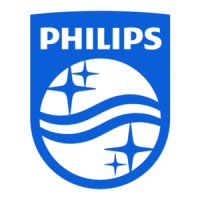
Do you have a question about the Philips 200CW8FB/00 and is the answer not in the manual?
| panel size | 20.1"/ 51 cm |
|---|---|
| effective viewing area | 433.4 x 270.9 mm |
| pixel pitch | 0.258 x 0.258 mm |
| brightness | 300 cd/m² |
| contrast ratio (typical) | 1000:1 |
| smartcontrast ratio (dynamic) | 3200:1 |
| viewing angle | 160º (H) / 160º (V) |
| response time (typical) | 5 ms |
| smartresponse | 2 ms (Gray to Gray) |
| maximum resolution | 1680 x 1050 @ 75Hz |
| optimum resolution | 1680 x 1050 @ 60Hz |
| video dot rate | 205 MHz |
| horizontal scanning frequency | 30 - 83 Hz |
| vertical scanning frequency | 56 - 76 Hz |
| consumption (on mode) | < 45 W (Typical) |
|---|---|
| consumption (economy mode) | 31 W |
| consumption (off mode) | < 1 W |
| power supply | Built-in, 100-240VAC, 50/60Hz |
| relative humidity | 20% - 80% |
|---|---|
| temperature range (operation) | 0°C to 40°C |
| temperature range (storage) | -20°C to 60°C |
| signal input | VGA (Analog), DVI-D |
|---|---|
| USB | USB 2.0 x 1 |
| sync input | Composite Sync, Separate Sync, Sync on Green |
| box dimensions | 535 x 451 x 159 mm |
|---|---|
| set dimensions | 480 x 321 x 65 mm |
| set dimensions with stand | 480 x 393 x 193 mm |
| product weight (+stand) | 4.87 kg |
| weight incl. packaging | 6.76 kg |
General safety, laser, ESD, and LCD module handling instructions.
Details on screen type, size, pitch, and surface characteristics.
Covers vertical/horizontal scanning and video signal parameters.
Visual representation of the monitor's main functional blocks and their interconnections.
Basic power-on, connection, and control button descriptions.
Explanation of OSD feature, its interface, lock function, and menu structure.
Step-by-step guide for connecting the monitor to a computer.
Pinout details for Analog (VGA) and DVI connectors.
Lists resolutions, horizontal, and vertical frequencies supported by the monitor.
Explains what pixels and sub-pixels are and how they form an image.
Details bright/black defects, their appearance, proximity, and acceptable levels.
Visual guide to common LCD panel failure modes and their symptoms.
Flowchart illustrating the monitor's software logic and decision points.
Block diagrams for Main Board, Power/Inverter Board, and their circuits.
Detailed schematic of the main board, showing component connections and signal paths.
Schematic diagram for the power board, illustrating voltage regulation and power distribution.
Schematic of the key board, including button and LED connections.
Top and bottom views of the main board PCB with component placements indicated.
Layout diagram for the power board, showing placement of components and connectors.
PCB layout for the key board, illustrating component and button positions.
A high-level diagram showing how major boards are interconnected.
Instructions for initial disassembly, starting with back view and cable cover removal.
Instructions for removing the monitor base and hinge cover.
Steps for removing the column and the bezel.
Detailed steps for removing the monitor's bezel and rear cover.
Instructions for removing shielding, main board, power board, and USB board.
Instructions for removing the main frame and final panel separation.
Addresses issues like 'No Picture' and 'Screen Says' with user-correctable solutions.
Solutions for vertical flicker, screen brightness, and image retention problems.
Flowcharts for diagnosing 'No Power', 'No Picture', and 'White Screen' on the main board.
Flowcharts for diagnosing 'No Power' and 'No Backlight' on the power/inverter board.
Flowchart for diagnosing OSD instability or non-working key pad issues.
Lists required tools, software, and installation steps for ISP.
Detailed steps for running the ISP utility, loading files, and performing the write process.
Explains the need for DDC data re-programming and related procedures.
Steps for installing DDC software and connecting the DDC board.
Guides for performing analog and digital DDC write processes, including serial number entry.
Hexadecimal and decoded data for the analog EDID.
Hexadecimal and decoded data for the digital EDID.
Lists required equipment, software, and setup procedures for adjustment.
Procedure for measuring and confirming color temperature using the CA-210.
A diagram showing all parts disassembled, with a parts list.
Lists recommended and spare parts with part numbers and Philips 12NC codes.
Compares part differences between various 200CW8 models.
Foreword, product profile, and specifications for LPL and CPT LCD panels.
Covers scanning frequencies, electrical characteristics, interfaces (VGA, DVI, USB), and timing requirements.
Details power management, display identification, EDID, hot-keys, Smart Contrast, Smart Image modes, and OSD linkage.
Details brightness uniformity, cross talk, white color adjustment, and image size.
Details mechanical properties, transportation, and environmental operating conditions.
Covers MTBF, acceptance tests, pixel defect policy, and worldwide regulatory compliance.
Covers fire, shock hazard, implosion, and X-radiation precautions.
Procedures for leakage current tests and safety guidelines for parts replacement.
